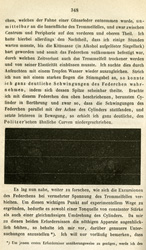The Night of the Listening Dead
First Sounds celebrates Halloween by unveiling a historic sound recording made using a technique worthy of Frankenstein himself.
Phonograph historians are generally familiar with Alexander Graham Bell's ear phonautograph, which recorded sounds using the ear of an actual human cadaver as a membrane. Bell got this seemingly ghoulish idea from his associate Clarence Blake, who was indebted for it to the Viennese otologist Adam Politzer.
Working closely with the renowned instrument-maker Rudolph Koenig, Politzer attached glass threads to the ossicles of preserved human ears (as well as the ears of birds and dogs) and recorded their vibrations on sheets of lampblacked paper, an arrangement he called the tympanograph. A third party showed his results to the Académie des Sciences on June 10, 1861. It was this presentation that prompted Édouard-Léon Scott de Martinville to deposit some of his own phonautograms with the Académie the following month, including "Au Clair de la Lune."
A colleague of Politzer's named August Lucae tried something a little different. Like Politzer, Lucae had the run of Rudolph Koenig's facilities and worked with actual human remains, obtained in his case from Dr. Rimbaud of the Amphithéâtre d'anatomie. Instead of focusing on the ossicles, Lucae attached a stylus to the eardrum itself and recorded the vibrations it conveyed from a tuning fork placed on the mastoid process. He published a piece of one of his experimental records in Virchow's Archiv für pathologische Anatomie und Physiologie und für klinische Medicin for 1862. In 1864, Politzer and Lucae published further recordings in the first volume of Politzer's own Archiv für Ohrenheilkunde.
First Sounds collaborator Patrick Feaster recently acquired a copy of Lucae's 1862 publication and prepared a high-resolution scan of the recording. Earl Cornell at Lawrence Berkeley National Laboratory then processed this scan back into sound. Lucae's plate contains parts of three different revolutions of the drum, played back here with a brief silence inserted between each trace. Note the hint of a pure tuning fork timbre. On the other hand, the three different pitches we hear are presumably due to an irregular recording speed, not to changes in the pitch of the source sounds. In that sense what we're hearing is an artifact of the recording process, not a feature of sounds captured in Koenig's workshop 146 years ago. Lucae doesn't tell us what the frequency of his tuning fork was.
Listen: Lucae's 1862 phonautogram, played back at three different speeds (mp3)
Lucae's recording is short and fragmentary. Like many of the earliest surviving sound recordings, its significance arguably lies more in what it is than in what it sounds like. The phonograph has long been celebrated for allowing us to hear the voices of people long dead. In this case, we instead hear snippets of sound heard by the ear of someone who died before the year 1862-and who was no more alive at the time than he or she is now. Trick or treat!

Above: Page from Lucae's 1862 article, showing the phonautogram in context (view larger image)
![]()
Above: Detail of Lucae's 1862 phonautogram
Next week: eavesdrop on a groundbreaking experiment in cognitive psychology from 1865.
[The historical details presented here are drawn from a book manuscript currently in preparation on the prehistory of the phonograph; contact the author].
